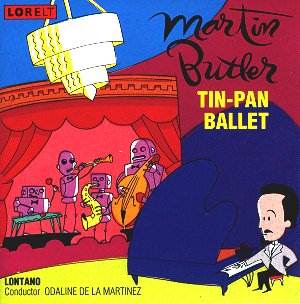 Composer: Aaron Copland
Composer: Aaron Copland
Works: Fanfare for the Common Man, Rodeo, Billy The Kid, El Salon Mexico, Danzon Cubano, Quiet City, Down a Country Lane, Appalachian Spring (original chamber version), Nonet, Vitebsk, Sextet, Piano Quartet, Lincoln Portrait, Dickinson Poems, Old American Songs, The Tender Land
Performers: LSO, New Philharmonia, Columbia Chamber Ensemble, Juilliard Quartet, NYPO, Carl Sandburg (orator), William Warfield (baritone), Oscar Levant (piano), Joy Clements (soprano)
Recording: Various sessions from 1942 to 1973
Label: Sony Classical
Aaron Copland’s oeuvre is a crucial touchstone in American classical music, embodying a synthesis of folk idioms and modernist techniques that reflect the cultural landscape of the early to mid-20th century. The “A Copland Celebration” set from Sony Classical, released as part of the centenary commemorations, encapsulates the composer’s diverse output across three volumes, showcasing both well-known masterpieces and rare gems. The anthology not only honors Copland’s legacy but also provides an opportunity to reassess his contributions through a modern lens.
The first volume presents iconic works like “Fanfare for the Common Man” and “Rodeo,” performed by the London Symphony Orchestra under the composer’s baton. The recording of “Fanfare” reveals a robust bass presence that, while not achieving the sonic clarity of contemporary orchestral standards, captures the work’s patriotic fervor with a visceral immediacy. Copland’s orchestration, often lauded for its transparency, is exemplified in “Rodeo,” where the spirited rhythms of the second dance episode resonate with the vitality of American folk dance. However, a slight unevenness in the LSO’s ensemble during the final dance section does detract from the overall cohesiveness, suggesting that while the players exhibit enthusiasm, the ensemble is not always perfectly synchronized.
The chamber music featured in the second volume, particularly “Appalachian Spring” in its original form, offers a striking contrast to the orchestral works. Here, the recording shines with a clarity that enhances the delicate interplay of instruments, showcasing Copland’s genius for creating a vivid soundscape that evokes the American landscape. The rehearsal sequence included provides fascinating insights into Copland’s meticulous approach, revealing a composer deeply engaged with the nuances of his work. The Nonet, less frequently encountered in the repertoire, oscillates between the influences of Bach and neo-classicism, displaying Copland’s diverse stylistic palette. The fidelity of the 1962 recording, while occasionally harsh at forte dynamics, nevertheless captures the raw energy of the performance.
Volume three delves into Copland’s vocal works, including the “Lincoln Portrait” narrated by Carl Sandburg. This performance, though historically significant, reveals the challenges inherent in balancing oratory with orchestral accompaniment. Sandburg’s delivery, while compelling, may not resonate with all listeners due to its idiosyncratic phrasing. The orchestral support from the New York Philharmonic is fervent and contributes to the emotional weight of the piece, yet the sonic balance occasionally tips in favor of the voice, overshadowing the instrumental texture.
Throughout these recordings, the engineering quality is commendable, particularly for the era in which they were produced. The sound achieves a good to excellent standard, with the inherent warmth of analog recordings complementing the emotional depth of Copland’s music. The inclusion of previously unavailable works adds significant value, enticing both seasoned Copland aficionados and newcomers to explore the breadth of his output.
The celebration of Copland’s centennial through this three-volume set is a testament not only to his enduring influence but also to the artistry of the performers and the meticulous care of the engineers involved. The collection serves as an essential resource for understanding Copland’s contribution to American music, providing a vibrant auditory experience that captures the essence of his artistic vision. The synthesis of familiar favorites with hidden treasures ultimately constructs a rich tapestry of sound that is both engaging and enlightening, reaffirming Copland’s position as a central figure in the canon of American classical music.



